#rick hirst
Explore tagged Tumblr posts
Text
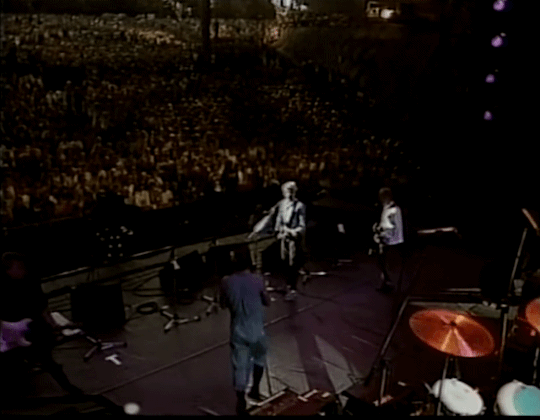
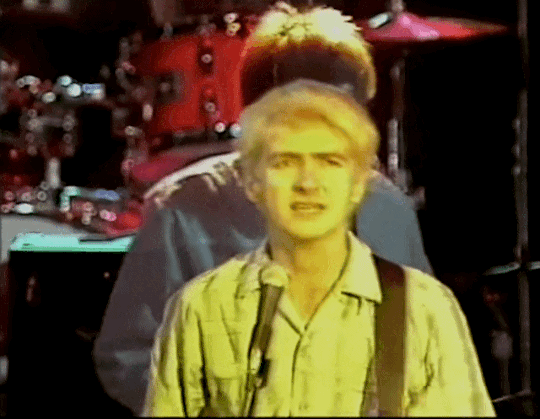
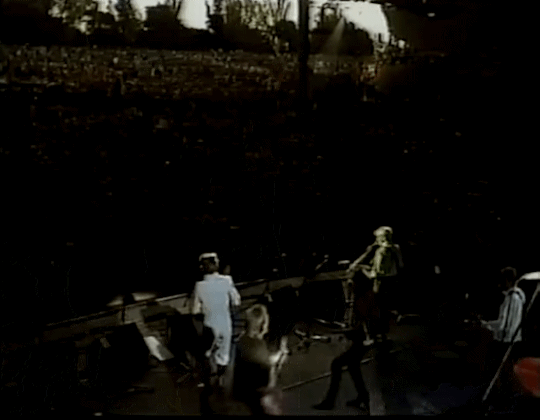
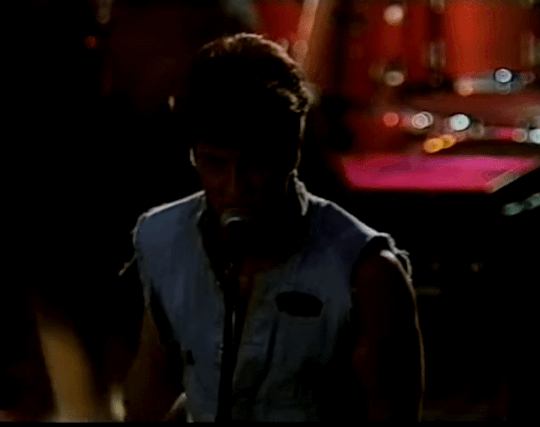
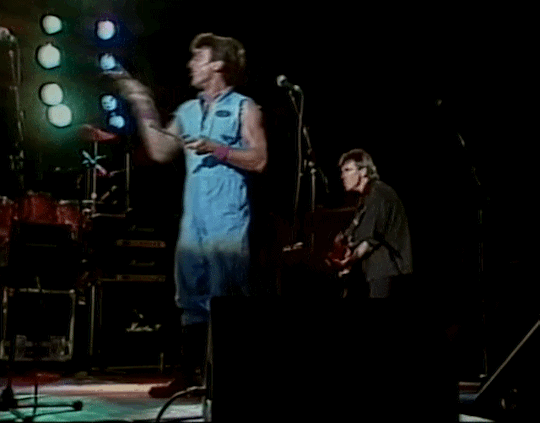
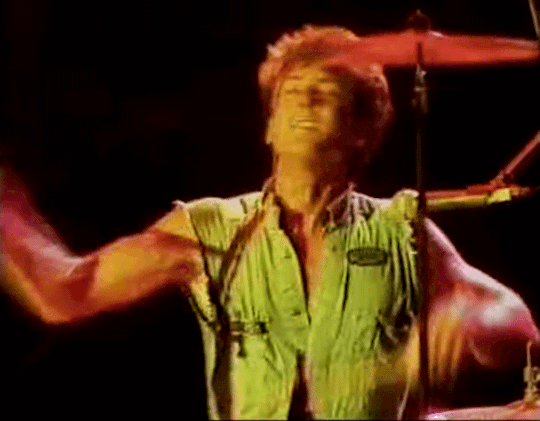
Neil Finn and Rob Hirst singing "Helps Me Helps You" in 1985
#sooooo i didn't know this existed until 30 minutes ago and i am shaken to the core#NEIL singing MIDNIGHT OIL with ROB and HESSIE#also rick and martin so it's basically ghostwriters#but oh my god neil is so blond! and!! they sing this so well i am gonna scream#when neil calls rob up to the front of the stage im just like YASSS THATS MY BOYFRIEND!!!!!!!!#hsdjdkdldjdjskks#idek what to tag this#midnight oil#rob hirst#crowded house#sorta#neil finn#paul hester#my gifs#neil's hair plus the lighting make him look like a canary
16 notes
·
View notes
Text
Gagosian to Present Modern and Contemporary Works at Art Basel Miami Beach
Gagosian to Present Modern and Contemporary Works at Art Basel Miami Beach

MIAMI, November 22, 2021—Gagosian is pleased to announce its participation in Art Basel Miami Beach 2021 with a presentation of modern and contemporary works. The gallery’s booth will include works by Richard Avedon, Georg Baselitz, Louise Bonnet, John Currin, Urs Fischer, Walton Ford, Helen Frankenthaler, Theaster Gates, Katharina Grosse, Andreas Gursky, Damien Hirst, Alex Israel, Ewa Juszkiewicz, Titus Kaphar, Rick Lowe, Brice Marden, Albert Oehlen, Pablo Picasso, Ed Ruscha, Richard Serra, Cy Twombly, Mary Weatherford, and Christopher Wool, among others. A selection of these works will also appear on gagosian.com and on Art Basel’s Online Viewing Room. To receive a PDF with detailed information on the works, please contact the gallery at [email protected]. To attend the fair, purchase tickets at artbasel.com. Art Basel Miami Beach December 2–4, 2021, Booth D5 Miami Beach Convention Center _____ Urs Fischer, Starburst, 2021, aluminum composite panel, aluminum honeycomb, polyurethane adhesive, epoxy primer, gesso, solvent-based screen-printing paint, water-based screen-printing paint, and alkyd resin, 64 × 80 inches (162.6 × 203.2 cm) © Urs Fischer. Photo: Mats Nordman
13 notes
·
View notes
Note
I know you got asked this before but it's well over 7 years old so I was wondering if you could update it with new, unused or unseen faceclaims but I'm looking for a faceclaim that could be used in The 100 as a Grounder or just really someone that has braids in their hair for one or more of their roles? Thank you!
Braids:
Cynthia Addai-Robinson (Spartacus) Ghanaian / English.
Ed Skrein (Game of Thrones) Ashkenazi Jewish / possibly English.
Alexander Ludwig (Vikings)
Alex Høgh Andersen (Vikings)
Travis Fimmel (Vikings)
Alexander Dreymon (Vikings)
Eva Birthistle (Vikings)
Gaia Weiss (Vikings)
Georgia Hirst (Vikings)
Peter Franzén (Vikings)
Karata Erika (Arthdal Chronicles) Japanese.
Kim Ok-vin (Arthdal Chronicles) Koream.
Jessica Green (The Outpost)
Leonardo Wu (Marco Polo) Chinese.
Poppy Drayton (The Shannara Chronicles)
Rick Yune (Marco Polo) Korean.
Ruta Gedmintas (His Dark Materials)
Claudia Kim (Marco Polo) Korean.
Burak Çelik (Kuruluş: Osman) Turkish.
Damaris Lewis (Titans) African-American.
Locs:
Adaku Ononogbo (Cursed) Nigerian and Trinidadian.
Naomie Harris (Pirates of the Caribbean) Afro-Jamaican, Afro-Trinidadian, Afro-Guyanese, English.
Christine Adams (Terra Nova) Afro-Jamaican.
Renee Elise Goldsberry (Altered Carbon) African-American.
Danai Gurira (The Walking Dead) Zimbabwean.
Michael B. Jordan (Black Panther) African-American.
Daveed Diggs (Snowpiercer) African-American / Ashkenazi Jewish.
Vibes:
Jang Dong-gun (Arthdal Chronicles) Korean.
Howard Charles (The Musketeers) Afro-Jamaican and English.
Liana Cornell (Britannia)
Lorraine Toussaint (Into the Badlands) Afro-Trinidadian.
Natalia Tena (Game of Thrones)
Oona Chaplin (Game of Thrones) Chilean [Mapuche, Spanish, evidently Romanian] / English, Irish, 1/16th Scottish.
Rhona Mitra (Doomsday) Bengali Indian, English / Irish.
Alex Kingston (Boudica)
Olga Kurylenko (Centurion)
Natalie Dormer (The Hunger Games)
Ellen Hollman (Spartacus)
Jessica Parker Kennedy (Black Sails) Black Canadian, Italian and Russian.
Paterson Joseph (The Hallow Crown) Saint Lucian.
Son Ye-Jin (The Pirates) Korean.
Song Kang-ho (Snowpiercer) Korean.
Will Yun Lee (Altered Carbon) Korean.
Erin Kellyman (The Falcon and The Winter Soldier) Afro-Jamaican and Irish.
Wunmi Mosaku (Loki) Yoruba Nigerian.
Dev Patel (The Green Night) Gujarati Indian.
Lewis Tan (Into the Badlands) Chinese Singaporean / Irish, possibly English.
Babou Ceesay (Into the Badlands) Gambian.
Park Hae-joon (Arthdal Chronicles) Korean.
Jung Jae-won (Arthdal Chronicles) Korean.
Mahesh Jadu (Marco Polo) Indo-Mauritian [Bihari, Gorakhpuri and Kashmiri].
Ray Fearon (Da Vinci’s Demons) Black British.
Pedro Pascal (The Mandalorian) Chilean [Spanish, Basque, possibly other], 1/16th Peruvian.
Ming-Na Wen (The Mandalorian) Macanese.
Mads Mikkelsen (King Arthur)
Jacob Anderson (Game of Thrones) Afro-Caribbean and English.
Idris Elba (Thor and The Dark Tower) Sierra Leonean / Ghanaian.
Hale Appleman (The Magicians) Ashkenazi Jewish / Irish, English - queer.
Florence Kasumba (The Falcon and The Winter Soldier and Emerald City) Ugandan.
Joe Taslim (Mortal Kombat) Indonesian [Chinese and Palembangese].
Chelsea Harris (Snowpiercer) Black British.
Thaddea Graham (The Irregulars) Chinese.
Keon Alexander (The Expanse) Unspecified, possibly Persian.
Wes Chatham (The Expanse)
Jun Ji-hyun (Kingdom) Korean.
Thandiwe Newton (Westworld) Shona Zimbabwean / English-Cornish.
Hey anon, thank you so much for searching first before sending an ask! I deleted the old ask and moved some faceclaims over, others I did not as they’re unapologetically problematic but here ya go!
14 notes
·
View notes
Text
Cap 168 : Paleoindios en Islas del Pacífico de Canadá y Estados Unidos.
.
Para la Teoría de la Llegada Costera de los Paleoindios desde Beringia hasta Norte América es vital estudiar los Yacimientos Arqueológicos en Islas del Océano Pacífico de Canadá y Estados Unidos.
.
Siguiente Mapa : Ves las Ciudadades de Los Angeles y San Diego en California y las Islas del Canal a la Izquierda arriba = Santa Rosa a la izquierda y Santa Cruz a la derecha.
.
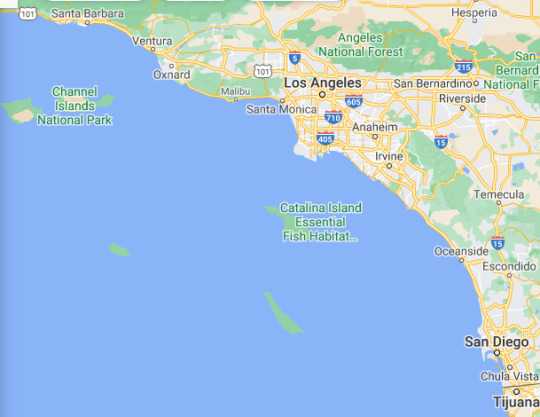
. En el siguiente Mapa ves a toda California, Tijuana queda en México. Las Islas del Canal son las muy cercanas a la Ciudad de Los Angeles. .
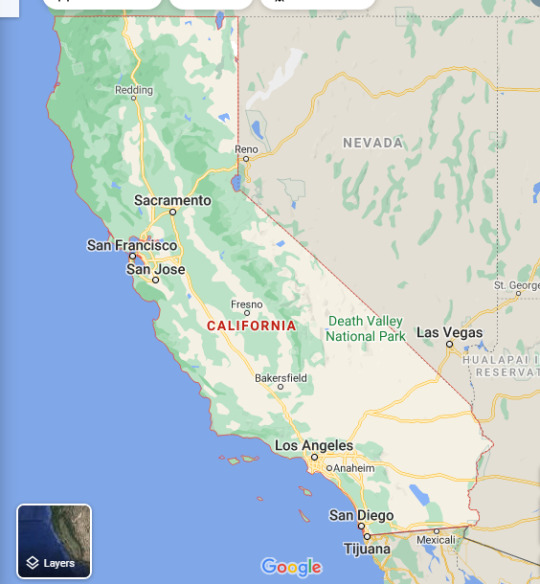
Aunque no es la Prueba Reina, ni es la Seguridad definitiva y total, si es cierto que se acumulan Evidencias en las Islas del Pacífico Norte, frente a Canada y Estados Unidos de que los Paleoindios eran fuertes inteligentes navegantes en Botes y que estaban acostumbrados a comer productos Marinos como Peces, Moluscos, Mamíferos Marinos, etc ..
.
Las Islas del Canal se pueden divisar desde las Montañas de Santa Bárbara, California. Los Paleoindios tenían que ser buenos Navegantes en Botes para recorrer los 10 Kilómetros de Mar que separaban al Continente de las Islas en ese Tiempo de 12,000 Años antes del Presente.
.
*******************************
.
Abstract
Three archaeological sites on California’s Channel Islands show that Paleoindians relied heavily on marine resources. The Paleocoastal sites, dated between ~12,200 and 11,200 years ago, contain numerous stemmed projectile points and crescents associated with a variety of marine and aquatic faunal remains.
At site CA-SRI-512 on Santa Rosa Island, Paleocoastal peoples used such tools to capture geese, cormorants, and other birds, along with marine mammals and finfish. At Cardwell Bluffs on San Miguel Island, Paleocoastal peoples collected local chert cobbles, worked them into bifaces and projectile points, and discarded thousands of marine shells.
With bifacial technologies similar to those seen in Western Pluvial Lakes Tradition assemblages of western North America, the sites provide evidence for seafaring and island colonization by Paleoindians with a diversified maritime economy.
.
Fuente : Revisa Science
Paleoindian Seafaring, Maritime Technologies, and Coastal Foraging on California’s Channel Islands
.
https://science.sciencemag.org/content/331/6021/1181
.
*******************************
-
El Corredor del Río MacKenzie entre las Capas de Hielo Laurentida y Cordillerana pudo demorarse mucho en ser abierto y transitable. Y es posible que los Paleoindios ya estuvieran en Estados Undios por Vía Marítima, es decir navegando en Botes.
.
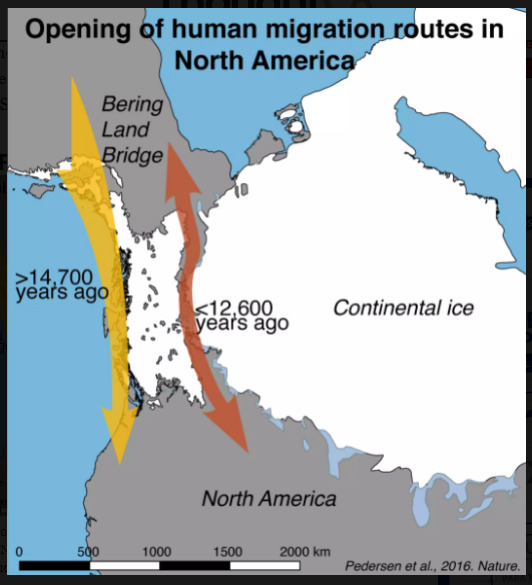
.
Fuente : Is the Ice-Free Corridor an Early Pathway into Americas? - By K. Kris Hirst
Updated July, 2019
https://www.thoughtco.com/ice-free-corridor-clovis-pathway-171386
.
*******************************
.
Sedimentos extraídos con Taladro como un Tubo de la Isla Sanak en Archipiélago de las Aleutas de Alaska muestran que había un Corredor Marino libre para los Paleoindios. El Siguiente Mapa muestra donde queda la Isla Sanak en la Geografía de Hoy, las Investigaciones dan prueba de no estar cubierta de Hielos antes de que se abriera el Corredor terrestre entre las Capas de Hielo Laurentida y Cordillerana. Y de que pudiera haber dado Alimentos para la Vida Humana.
.

.
Siguiente Mapa : Como era la Isla Sanak integrada al Continente Beringia. Cuando se abrió el Corredor ( Corridor ), Pasadizo o Brecha ya habían llegado los Paleoindios a British Columbia y a Estados Unidos. Los Científicos dudan que el Corredor proporcionara Alimentos a Animales y Hombres en sus Primeros Cientos de Años libre de Hielo.
.

.
Sanak Island lies around the midpoint of the Aleutian Archipelago extending off Alaska. It is 15 miles long by 6 miles wide and is capped by a single volcano called Sanak Peak. The Aleutians would have been the highest point on the Beringian landmass. The analysis of pollen from sagebrush, heather, willow and grasses, as well as radiocarbon-dated deep water sediments, from the bottom of 3 lakes on Sanak indicate that the island and its now-submerged coastal plains (and therefore the northern part of the Pacific coastal route) were free of ice by around 17,000 years ago.
Th Island is capped by a single volcano called Sanak Peak. The Aleutians would have been the highest point on the Beringian landmass.
.
New evidence suggests sea-faring Paleo-Indians were colonising America 2,000 years before Ice Free Corridor opened --- by Lee Rimmer
.
https://www.abroadintheyard.com/evidence-suggests-seafaring-paleoindians-colonising-americas-before-ice-free-corridor-opened/
.
*******************************
.
Fuente : Revista Nature, ver link abajo
Humanos habitando las Islas del Canal de California hace 13,000 Años y cambiando la Fauna.
.
California’s Channel Islands (CCI) are an ideal system to refine our diagnostic toolkit due to the well-studied geologic and human histories and communities of iconic endemic fauna. The CCI consist of eight islands that are currently located approximately 20–100 km from the California coastline.
The size of the islands and their distance to the mainland has shifted with past glacial-interglacial cycles, but they were never connected by a land or ice bridge during the Quaternary .
The CCI are split into two north–south island groupings with distinct geologic histories: the northern islands (Santa Rosa, San Miguel, Santa Cruz, Anacapa) were joined as a single superisland, Santarosae, as recently as 10,000 years ago, whereas the southern islands have always been more isolated.
.
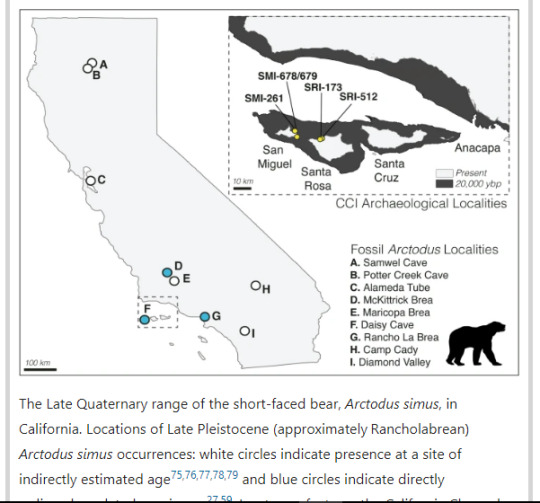
.
Humans colonized Santarosae ~ 13,000 years ago, although there are hints of a possible earlier human presence. The island’s more than 700 archaeological sites document substantial anthropogenic influences on the ecology of the islands from the Late Pleistocene to the present, including the introduction of taxa previously considered to be native endemic lineages. Daisy Cave (CA-SMI-261), a well-studied and finely stratified archaeological and paleontological site on San Miguel Island, has yielded a diverse assemblage of faunal remains that provide critical insights about the relationships between Indigenous peoples and the endemic fauna of the CCI.
.
Biogeographic problem-solving reveals the Late Pleistocene translocation of a short-faced bear to the California Channel Islands.
.
https://www.nature.com/articles/s41598-020-71572-z
.
*******************************
.
The three island camps, which are between about 11,000 and 12,000 years old, show that some early Americans were well adapted to coastal living.
........
Because the Channel Islands would have lain some 10 kilometres off the California coast at the time, the hunters must have reached them by boat, Rick says. Once they found the islands, which are visible from present-day Santa Barbara, the mariners would have found ample food and few predators. "They would have found an amazing suite of resources — massive amounts of seabirds, seals and sea lions" not found on the mainland, he says. "In my view it would have seemed like a paradise."
The archaeologists surmise that the people who lived at the Channel Island sites were adept at making a living from the sea, and were not from the interior of North America. The tools found on the Channel Islands are a better match to tools attributed to the Western Pluvial Lakes Tradition in the Pacific Northwest than to the inland Clovis culture, which, also, had disappeared by around 12,000 years ago. "What it tells us is that these weren't people who came from the continental interior and stumbled onto the coast," says Rick.
........................
Ted Goebel, an archaeologist at Texas A&M University in College Station, says the stemmed stone points found on the Channel Islands resemble those found in Kamchatka, Russia, dating from 1,000 years earlier,
March 2011 Seafront property attracts ancient Californians Ewen Callaway Nature (2011)
.
https://www.nature.com/articles/news.2011.135
.
.
*******************************
.
Hay varios Yacimientos Arqueológicos en las Islas del Norte del Canal de California, muy cercanas a la Ciudad de Los Angeles. Estos se detallan en el Link al Artículo mas abajo.
Aquí están sus Nombres en este Mapa. Estas Islas estaban Unidas hace 14,000 Años y a esa gran Isla se le llama Santarosae, para distinguirla de la Santa Rosa actual.
Algunos hallazgos dan Cronologías de 13,500 Años antes del Presente, y varios intermedios hasta 11,000 AP.
Estos Yacimientos demuestran que los Paleoindios dominaban la Navegación en Botes, la Subsistencia de Animales Marinos como Peces, Moluscos y Mamíferos Marinos, también capturaban Aves Marinas y sus Huevos. Y se demuestra que perfectamente se podían desplazar por la Costa hasta llegar al antiquísimo Yacimiento Paleoindio de Monte Verde en Chile. El que destruyó la Hipótesis del “Clovis Primero” por su brutal Antiguedad.
Como estas Islas de California prometen tanto, entonces los Científicos están empezando a hacer Arqueología submarina con Vehículos no tripulados a Profundidad y con muchos Instrumentos, tratando de no arriesgar Humanos en una Labor muy pesada, demorada y ardua para hallar yacimientos sumergidos bajo mas de 100 mts que subió el Nivel del Mar desde hace 14,000 Años hasta el Presente.
Los mejores Hallazgos están por hacerse a mas de 100 mts de Profundidad pues ahí deber estar los Asentamientos Pesqueros Paleoindios. .
.

.
Site setting, stratigraphy, and dating
Today the NCI—consisting of Anacapa, Santa Cruz, Santa Rosa, and San Miguel islands—are located between 20 and 44 km from the adjacent mainland coast (Fig 1). Near the end of the Last Glacial Maximum (ca 20,000 cal BP), however, the islands were united into a single ~125 km long island known as Santarosae [12], the eastern end of which was as little as 6–8 km from the mainland.
The latest reconstructions of Santarosae’s paleogeography suggest that rising post-glacial sea level reduced the landmass by as much as 70–75 percent, causing the NCI to separate between about 11,000 and 9,000 years ago. Then and now, the NCI had a relatively impoverished terrestrial fauna, a fairly diverse and productive flora, and a wealth of edible marine resources, from seaweeds to marine mammals, shellfish, fish, and seabirds.
.
Maritime Paleoindian technology, subsistence, and ecology at an ~11,700 year old Paleocoastal site on California’s Northern Channel Islands, USA
.
https://journals.plos.org/plosone/article?id=10.1371/journal.pone.0238866
.
*******************************
.
.
1 note
·
View note
Photo

On this day in 2011, I’m With You was released! Produced by Rick Rubin. Artwork by Damien Hirst.
What’s your favorite song on the album? Listen now: http://smarturl.it/RHCPIWY
33 notes
·
View notes
Text
A Thousand Years by Damien Hirst: How Does Mortality Persuade Us?
EJS, UNLV
UNDER SUPERVISION OF DR DONOVAN CONLEY
2022
The perpetuating cycle of life and death is the last, stubborn nail in our coffin. It digs through our oak wood exterior, eager to imprint its inevitability into our consciousness. The light at the end of the tunnel beckons for us to come closer; as we progress through our years, we abide. Our society is fascinated with life and death: its natural order gives us a set deadline of how we should perform our roles as individuals. The morbid curiosity that breeds from our inescapable fascination with death inspires many artists. Damien Hirst, a British contemporary, is consumed by our mortal Sisyphean cycle. He designed his exhibit in 1990, A Thousand Years, to showcase his compulsion towards our impermanence. A Thousand Years persuades the audience in the three following ways; our mortality is mirrored in the box, our death is unavoidable, and we should feed on satisfaction when we are allowed. In this essay, I will outline three persuasive techniques that emphasize Hirst’s purpose in A Thousand Years. I will use Marshall McLuhan’s “The Medium is The Message”, Helena Bilandzic and Rick Busselle’s “Narrative Persuasion” and Kenneth Burke’s “Psychology and Form” to examine the persuasiveness of this exhibit; the criteria I will follow is the effectiveness, impact and cultural response to A Thousand Years. Finally, I will offer recommendations to A Thousand Years to increase its persuasiveness.
Damien Hirst is a staple in the contemporary art scene. When A Thousand Years initially exhibited at the Young British Artists exhibition, Francis Bacon called Hirst personally to tell him of his admiration for A Thousand Years. Hirst, at his highest degree, enchants his viewers with his grotesque performances. Similar to A Thousand Years and exhibited a year after its release, Hirst launched The Physical Impossibility of Death in the Mind of Someone Living. The title itself is an indicator of Hirst’s obsession with death; it tells the story of how death plagues our every day thoughts and behavior. It shows a tiger shark cloaked in formaldehyde encased in a steel-structured, glass cube. Hirst makes an example of living animals and often captures their mortality in formaldehyde; in a way, he is making them immortal. However, A Thousand Years is slightly more complicated than its predecessor. A Thousand Years is a large cube; inside the cube there are two sides. On one side lay a cow head, or in some recent renditions of the exhibit, a slab of meat. Above the deceased animal is an insect electrocution device. The second side is another cube. There are four, singular holes on each surface and inside the holes are maggots. The maggots evolve into flies and through the slim piece of glass that separates the two sides, the flies feed at the slab of meat. Alternatively, they become attracted to the light that glows off of the electrocution device then meet a shocking death. The exhibit is bizarre. It is full of gore. It is messy. It is an immediate juxtaposition to the sterile environment of an art museum. But it captivates the viewer because of its carnage. The sight of the decayed animal is alarming; some may say its cruelty. Though the real treat lay within the flies. When the audience examines the isolated cube, almost similar to a die, the birth of the maggots is brutal. They squirm out and away from their birth place, eager to develop into a fly; they amongst peers, unbeknownst to the limited fate they are presented. When they become flies, two paths unfold before them. They can choose to live a life of satisfaction, oblivion, and bliss through consumption of the decayed animal. Or they can wander beyond their bounds and fly to their death. Even when they see their companions die, they still choose to dance around the light, engrossed by its luminance and starkness to the world around them. Similar to Icarus and the Sun, the flies know nothing of consequence and prefer to live a life of grandeur rather than logic. A Thousand Years symbolizes the cycle of human life and how innate our desire to be alive, to be satisfied and to die truly is. We see the paths the world paves for us, and through our own reasoning and experience, we choose the route that is best fit for how we feel in the moment. Regardless of the outcome, we decide our fate.
Hirst does a fantastic job of persuading the audience of our mortality. He sends the message of our fragile state of being through three persuasive techniques. Through McLuhan’s “The Medium is the Message” he writes, “For the ‘message’ of any medium or technology is the change of scale or pace or pattern that it introduces to human affairs” (McLuhan, 1). He explains that the medium is an extension of ourselves, and that the consequences or successes that follow align with our personal beliefs and society’s expectations. The medium controls how we interact with the world, how we interpret the world and how we connect with our peers. McLuhan quotes General David Sarnoff who says, “Apple pie is in itself neither good nor bad; it is the way it is used that determines its value” (McLuhan, 3). There is no objective opinion of whether apple pie is delicious or disgusting. It is varied by the individual. Like art, which is entirely subjective to the viewer and the artist, there is no correct way to understand the “message” presented by the medium. However, Hirst uses his medium to tell the story of an endless cycle of life or death, the audience is persuaded by our transience. This changes our behavior through fear, perhaps even through admiration for his work. Like Francis Bacon, we are allowed to feel appreciation for an exhibit that outlines a mundane, underrated chapter of our lives. Second, Helena Bilandzic and Rick Busselle’s “Narrative Persuasion” tell us the difference between narration and persuasion. They write, “This distinction between persuasion and narrative also is reflected in the view of audiences as processing information in either a paradigmatic or narrative mode” (Bilandzic & Busselle, 200). When we differentiate the paradigmatic and the narrative mode, we take into consideration their purpose. The paradigmatic mode weighs quantitive data; typically the paradigmatic mode evaluates facts and information. Versus its narrative counterpart which interprets qualitative data. The narrative mode is primarily focused on what events and characters caused this situation to arise (Bilandzic & Busselle, 200). An example of this is, “I got into a car wreck.” The audience is naturally curious what caused this event; was the wreck my fault, or was it the fault of an outside character, yet to be introduced to my narrative? An important key to the narrative mode is the story realization of the audience. Our minds are quick to use our own vernacular to assess the scene. We realize what we know, and this is explained further by Bilandzic and Busselle, “Story realization is the audience member’s cognitive and emotional understanding of events based on the text and their own pre-existing, relevant knowledge of the topic” (Bilandzic & Busselle, 201). When we apply the narrative persuasion to A Thousand Years, Hirst reaches the audience through an impractical method. He shocks the viewer with an outlandish performance; the narrative we can understand from A Thousand Years is a dead metaphor. It is a pattern depicted through our real lives, but it is also a subject we see regularly from media. As the viewer approaches the cube out of pure attraction, their subconscious makes an instant connection between the maggots, the flies, the slab of meat and the electrocution device hung so proudly above the rotation of mortality. The viewer’s vernacular expands their understanding of the impression Hirst is painting. With their prior understanding of life and death, how quickly flies die from electrocution and their compulsion towards meat, the realization is clear: death is inevitable. We move forward into how Kennth Burke’s “Psychology and Form” applies to Hirst’s A Thousand Years. Burke opens his essay with an excerpt from Shakespeare’s Hamlet. He specifies the Act where Hamlet, Horatio and Marcellus wait on the ghost of his father; the audience is aware of Hamlet’s mental deterioration, and whether we’re consciously anxious of his father’s arrival, we watch with anticipation. Instead of his late father’s entrance, we are met with a blare of trumpets, an indication of the king’s arrival. This in itself is form. Burke describes form as the “psychology of the audience” (Burke, 2). He goes on to make the interpretation as the following: “Or, seen from another angle, form is the creation of an appetite in the mind of the audience, and the adequate satisfying of that appetite” (Burke, 2). As we dig deeper into Hirst’s work, the form of his piece truly affects the viewer. Because the audience is initially shocked by the presence of a decaying animal, maggots and flies, the form is essential to A Thousand Years. Burke writes about a type of form, eloquence, which is greatly apparent in A Thousand Years. To quote Burke, “The methods of maintaining interest which are most natural to the psychology of information (as it is applied to works of pure art) are surprise and suspense” (Burke, 7). Eloquence is a tool that is exacerbated in Hirst’s work; when we are uncomfortable, our vulnerability allows room for growth and change. It allows introspection and cognitive function to pull forward and grasp our subconscious; it forces us to look at A Thousand Years with more than face value.
With the criteria I created in my opening paragraph, I will evaluate whether A Thousand Years is persuasive. Hirst, the sender, delivers a message of gutsy mortality. Its effectiveness is renounced in its structure; I admire the dedication to gore, despite the critiques that come with using live and real animals. While my personal values tell me to flinch and waver at the face of animal death, this is the reality of our world. There is no hiding from death, and even when we imagine a happy world where somehow everyone is immortal and pain-free, that is not the truth. It creates a productive conversation within the contemporary art sphere, and it is present in the rhetorical sphere now, too. Hirst also demonstrates the impact A Thousand Years holds by its presence in an art museum. As previously stated, the evident disparity between the aseptic white walls versus the bloody, lifeless head of an animal is an image that will burn into anyone’s mind. Another perspective I’d like to add is during COVID-19, the exhibit was still open to viewers; when we observe A Thousand Years behind a mask and through its glass walls, it intensifies the feeling the art museum instills. We observe our lives in a barbaric, unsafe and uncensored fashion in a sterile environment. Finally, the cultural response speaks for itself. While PETA succeeded in dismantling A Thousand Years in some museums, others let this exhibit live. Minds like Francis Bacon and the YBA association admire A Thousand Years for what it is; a critical piece that propels us into a state of savagery. A piece that peels away the beauty we paint onto ourselves and reveals our true nature, and our unavoidable fate. There are no recommendations or changes I would make to A Thousand Years, as it a phenomenal standalone exhibit that speaks volumes for itself. Damien Hirst produces artwork that is refreshing, frightening and rhetorical. A Thousand Years persuades the audience in the three following ways; our mortality is mirrored in the box, our death is unavoidable, and we should feed on satisfaction when we are allowed. By applying the works of Marshall McLuhan, Helena Bilandzic and Rick Busselle and Kenneth Burke, we are able to digest A Thousand Years in a way where we’re able to utilize the medium, narrative persuasion and psychology and form in an evaluative fashion.
Bibliography Burke, Kenneth. “Psychology and form.” The Dial 79, 1925. Bilandzic, Helena & Busselle, Rick. “Narrative Persuasion.” SAGE Knowledge. (2012, October 11). Retrieved December 11, 2022, from https://sk.sagepub.com/reference/hdbk_persuasion2ed/n13.xml McLuhan, Marshall. “The Medium is the Message.” Understanding Media: The Extensions of Man, 1964.
#art criticism#rhetorical criticism#literature12#ejslit#art persuasion#damien hirst#a thousand years#nonfiction
0 notes
Video
vimeo
Apartments.com "2D Ted" from a52 on Vimeo.
Client: Apartments.com Agency: RPA
Chief Creative Officer: Joe Baratelli Executive Creative Director: Pat Mendelson Creative Directors: Hobart Birmingham, Perrin Anderson Associate Creative Directors: Erin Costello, Jeff St. Jean Art Director: Rik Patenaude Copywriter: Scott Ellman Junior Art Director: Ashley Cardwell Junior Copywriter: Nick Vukasovich Associate Producer: Madi Miller Executive Producer: Kay Lynn Dutcher SVP / Director, Video Production: Selena Pizarro ____________________________________________________________________________
LIVE ACTION Production Company: Hungry Man Director: Wayne McClammy Director of Photography: Bryan Newman Producer: Rick Jarjoura Production Supervisor: Yuki Wakano Production Designer: Robb Buono Executive Producer: Caleb Dewart Managing Partner / Executive Producer: Mino Jarjoura ____________________________________________________________________________ VFX VFX Studio: a52 VFX Supervisor: Andres Rafael Barrios CG Supervisor: Andrew Romatz Art Director: EJ Kang Lead Flame Artist: Steve Wolff Flame Artists: Richard Hirst, Michael Vaglienty, Chris Riley, Kirk Balden, Hugh Seville, Rod Basham, Richie White 3D Artists: Ariana Ziae Mohseni, Dustin Mellum, Jaemin Lee, Andrew Wilson, Bryan Cox, Josh Dyer, Jade Smrz, José Limón, Michael Cardenas, Jun Kim Matte Painters: Jie Zhou, Whitman Lindstrom Designers: June Cho, Tnaya Witmer Animators: James Hurlburt, Mark Feldman, Haram Jung, Laura Reedy, Trix Taylor Concept Artist: Marc Samson Producer: Jillian Lynes Production Coordinators: Sara Dotson, Shane Hoffman Head of Production: Stacy Kessler-Aungst Head of CG Production: Michael Steinmann Executive Producers: Patrick Nugent & Kim Christensen Managing Director: Jennifer Sofio Hall ____________________________________________________________________________
COLOR Color Studio: CO3 Los Angeles Colorist: Sean Coleman Color Producer: Matt Moran _________________________________________________________________________ EDITORIAL Editorial Company: Cut+Run Editor: Steve Gandolfi Assistant Editor: Moss Eletreby Producer: Jared Thomas ____________________________________________________________________________ SOUND Sound Mix: Lime
0 notes
Text
DURAN DURAN rinde tributo a DAVID BOWIE con su cover de "FIVE YEARS"
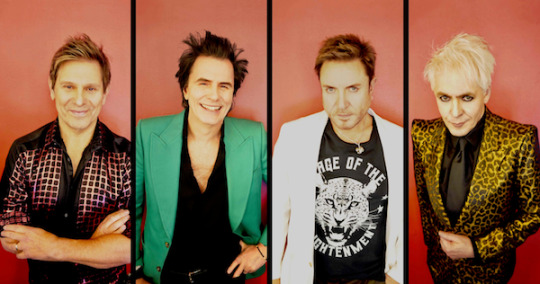
Duran Duran (Gentileza BMG)
Otras actuaciones : IAN ASTBURY, GARY BARLOW, BILLY CORGAN, ANNA CALVI, ANDRA DAY, PERRY FARRELL, PETER FRAMPTON, BOY GEORGE, RICKY GERVAIS, MACY GRAY, ADAM LAMBERT, DAVE NAVARRO, GARY OLDMAN, TRENT REZNOR, GAVIN ROSSDALE, TONY VISCONTI, RICK WAKEMAN, YUNGBLUD, y muchos más!
“FIVE YEARS” YA DISPONIBLE EN PLATAFORMAS DIGITALES
https://duranduran.lnk.to/fiveyears
Las leyendas del pop multi-premiadas y aclamadas internacionalmente DURAN DURAN iniciaron sus celebraciones de su 40 aniversario volviendo al lugar donde todo comenzó con una impresionante versión del clásico atemporal de David Bowie “Five Years”
El líder de Duran Duran, Simon Le Bon, revela: "Mi vida como adolescente giraba en torno a David Bowie. Él es la razón por la que comencé a escribir canciones. Una parte de mí todavía no puede creer en su muerte, pero tal vez sea porque hay una parte de mí donde todavía está vivo y siempre estará… Cuando compramos el disco en vinilo de Ziggy Stardust, nuestra primera prueba de su perfección fue la canción “Five Years”. No puedo explicar lo honrado que me siento que Duran Duran tenga la oportunidad de interpretar a este ícono y colocar nuestro nombre junto a Bowie para esta conmemoración de su música ".
Escucha Five Years de Duran Duran Aqui.
La canción es parte del muy esperado evento tributo de streaming mundial que tuvo lugar en conmemoración del que hubiera sido el cumpleaños 74 de Bowie y el quinto aniversario de su fallecimiento.
Duran Duran presentó “Five Years” en vivo en lo que fue una experiencia virtual cinematográfica espectacular e innovadora: A Bowie Celebration: Just For One Day! Una parte de lo recaudado se destinará a Save The Children, una organización benéfica importante para David Bowie.
Para más información, boletos, paquetes VIP y mercadería exclusiva, visita: http://rollinglivestudios.com/bowie.
El lanzamiento de la canción es solo una de las 40 iniciativas emocionantes que se están llevando a cabo para celebrar la rica y colorida carrera de cuatro décadas de la banda, bajo el lema "Duran Duran 40".
SOBRE “A BOWIE CELEBRATION: ¡JUST FOR ONE DAY!
Comenzando el 8 de enero a las 11pm ARG/CH, el espectáculo estuvo disponible para que los poseedores de boletos de todo el mundo lo disfruten en vivo y durante 24 horas después de su transmisión inicial.
Producida por Mike Garson en colaboración con Stacey Sher y Kerry Brown junto a Rolling Live Studios, A Bowie Celebration: Just For One Day! contó con actuaciones de artistas como: el líder de Culture Club, Boy George, el líder de la banda Pretty Reckless Taylor Momsen, el galardonado comediante y estrella de After Life Ricky Gervais, el supergrupo Ground Control con Dave Navarro (Jane's Addiction), Corey Taylor (Slipknot, Stone Sour), Taylor Hawkins (Foo Fighters) y Chris Chaney (Jane's Addiction), Gary Barlow (Take That), Trent Reznor (Nine Inch Nails), William Corgan (The Smashing Pumpkins), el actor ganador del Oscar Gary Oldman, Gavin Rossdale (Bush), Perry Farrell (Jane's Addiction), Joe Elliott (Def Leppard), la cantante ganadora del Grammy Macy Gray, Ian Astbury (The Cult), Lzzy Hale (Halestorm), Gail Ann Dorsey (David Bowie, Lenny Kravitz), Bernard Fowler (The Rolling Stones), Corey Glover (Living Color), la ganadora del Tony Awards Lena Hall, Judith Hill (ganadora del Grammy por 20 Feet From Stardom), Charlie Sexton (David Bowie, Bob Dylan), Adam Lambert, YUNGBLUD, la tres veces nominada al Grammy Andra Day, el actor y músico Michael C. Hall, Ian Hunter, la cantautora y virtuosa guitarrista Anna Calvi, el galardonado Atticus Ross, la vocalista de Kind Heaven Orchestra Etty Lau Farrel y la vocalista de How to Destroy Angels Mariqueen Maandig Reznor
Otros artistas que se unieron al streaming mundial: Everett Bradley, Matt Chamberlain, Ava Cherry, Richard Cottle, Greg Errico, Mark Guiliana, Henry Hey, Emir Ksasan, Tony Levin, Geoff MacCormack, Andy Newmark, y Pablo Rosario, la banda de Bowie de su última gira Mike Garson, Earl Slick, Sterling Campbell, Gerry Leonard y Catherine Russell, junto a Zack Alford, Carlos Alomar, Kevin Armstrong, Alan Childs, Robin Clark, Emm Gryner, Omar Hakim, Clare Hirst, Erdal Kızılçay, Tim Lefebvre, Martha Mooke, Holly Palmer, Mark Plati, Carmine Rojas, Charlie Sexton, el productor histórico de Bowie y músico Tony Visconti, más invitados especiales como Nandi Bushell, Mr Hudson, Gaby Moreno, Joe Sumner, Simon Westbrook, The Section Quartet y más.
¡Más noticias de Duran Duran por venir!
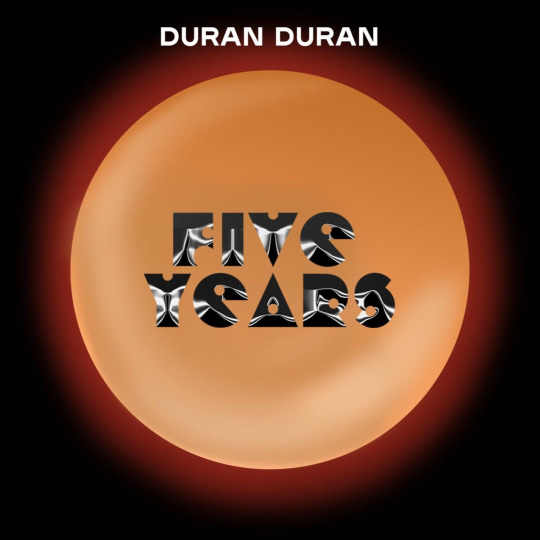
0 notes
Photo


Ghostwriters - Rob Hirst (Midnight Oil) and Rick Grossman (Hoodoo Gurus)
#hiiiii#90s ghosties my beloved#lookin very fine#god their first album is so good!#rob hirst#rick grossman#ghostwriters
6 notes
·
View notes
Text
Juno Aces Eighth Science Pass of Jupiter, Names New Project Manager
NASA - JUNO Mission logo. Nov. 2, 2017 Data returned Tuesday, Oct. 31, indicate that NASA’s Juno spacecraft successfully completed its eighth science flyby over Jupiter's mysterious cloud tops on Tuesday, Oct. 24. The confirmation was delayed by several days due to solar conjunction at Jupiter, which affected communications during the days prior to and after the flyby.
Image above: This illustration depicts NASA's Juno spacecraft soaring over Jupiter’s south pole. Image Credits: NASA/JPL-Caltech. Solar conjunction is the period when the path of communication between Earth and Jupiter comes into close proximity with the Sun. During solar conjunction, no attempts are made to send new instructions or receive information from Juno, as it is impossible to predict what information might be corrupted due to interference from charged particles from the Sun. Instead, a transmission moratorium is put into place; engineers send instructions prior to the start of solar conjunction and store data on board for transmission back to Earth following the event. “All the science collected during the flyby was carried in Juno’s memory until yesterday, when Jupiter came out of solar conjunction,” said the new Juno project manager, Ed Hirst, from NASA’s Jet Propulsion Laboratory in Pasadena, California. “All science instruments and the spacecraft's JunoCam were operating, and the new data are now being transmitted to Earth and being delivered into the hands of our science team.” Hirst has worked on Juno since its preliminary design phase, through launch in 2011 and arrival at Jupiter in 2016. He previously worked on NASA’s Galileo, Stardust and Genesis missions. Born in Guatemala City, Guatemala, he earned a B.S. in Aerospace Engineering from the University of Texas at Austin and joined JPL in 1993. Hirst succeeds Rick Nybakken, who was recently appointed deputy director for JPL’s Office of Safety and Mission Success. “We couldn’t be happier for Rick and know he will continue to do great things to further NASA’s leadership in space exploration,” said Scott Bolton, Juno’s principal investigator from the Southwest Research Institute in San Antonio. “Similarly, we are pleased with Ed’s promotion to project manager. He has been a critical part of Juno for many years and we know he’ll hit the ground running.”
Image above: Juno’s new project manager is Ed Hirst of NASA's Jet Propulsion Laboratory, Pasadena, California. Image Credits: NASA/JPL-Caltech. Juno's next close flyby of Jupiter will occur on Dec. 16. “There is no more exciting place to be than in orbit around Jupiter and no team I’d rather be with than the Juno team,” said Hirst. “Our spacecraft is in great shape, and the team is looking forward to many more flybys of the solar system’s largest planet.” Juno launched on Aug. 5, 2011, from Cape Canaveral, Florida, and arrived in orbit around Jupiter on July 4, 2016. During its mission of exploration, Juno soars low over the planet's cloud tops -- as close as about 2,100 miles (3,400 kilometers). During these flybys, Juno is probing beneath the obscuring cloud cover of Jupiter and studying its auroras to learn more about the planet's origins, structure, atmosphere and magnetosphere. JPL manages the Juno mission for the principal investigator, Scott Bolton, of Southwest Research Institute in San Antonio. The Juno mission is part of the New Frontiers Program managed by NASA's Marshall Space Flight Center in Huntsville, Alabama, for the Science Mission Directorate. Lockheed Martin Space Systems, Denver, built the spacecraft. JPL is a division of Caltech in Pasadena, California. More information on the Juno mission is available at: https://www.nasa.gov/juno https://www.missionjuno.swri.edu The public can follow the mission on Facebook and Twitter at: http://www.facebook.com/NASAJuno http://www.twitter.com/NASAJuno Images (mentioned), Text, Credits: NASA/Dwayne Brown/Laurie Cantillo/Tony Greicius/JPL/DC Agle. Greetings, Orbiter.ch Full article
76 notes
·
View notes
Text
As 15 melhores séries da década, disponíveis na Netflix e no Amazon Prime Video
Para ajudar os leitores que estão procurando uma boa série para maratonar, a Bula reuniu em uma lista as 15 melhores da década, lançadas a partir de 2010, disponíveis na Netflix e no Amazon Prime Video, os serviços de streaming mais populares no país. Para se chegar ao resultado fizemos uma compilação de listas publicadas nos sites “Vulture”, “Esquire”, “Colider”, “Insider” e “Rotten Tomatoes”.

Para ajudar os leitores que estão procurando uma boa série para maratonar, a Bula reuniu em uma lista as 15 melhores da década, lançadas a partir de 2010, disponíveis na Netflix e no Amazon Prime Video, os serviços de streaming mais populares no país. Para se chegar ao resultado fizemos uma compilação de listas publicadas nos sites “Vulture”, “Esquire”, “Colider”, “Insider” e “Rotten Tomatoes”. Entre os destaques, estão “Dark” (2017), de Baran bo Odar e Jantje Friese; “The Marvelous Mrs. Maisel” (2017), de Amy Sherman-Palladino; e “Downton Abbey” (2010), de Brian Percival e Ben Bolt. Os títulos estão organizados de acordo com o ano de lançamento.
Imagens: Divulgação / Reprodução Netflix e Amazon Prime Video
O Método Kominsky (2019), Chuck Lorre — Netflix

Na trama, Sandy Kominsky é um ator de grande sucesso em Hollywood que hoje dá aulas de atuação. Ele tenta ajudar seu agente de longa data e melhor amigo, Norman, a superar um momento difícil. Ao mesmo tempo, ele tem que administrar sua escola de atores e lidar com os problemas de sua vida amorosa. Com bom humor, Sandy e Norman enfrentam juntos a chegada da velhice.
Anne With an E (2017), Moira Walley-Beckett — Netflix

Os irmãos Marilia e Matthew decidem adotar um garoto para ajudar nos serviços da fazenda. Mas, por um engano, quem chega à casa deles é Anne, uma órfã de 13 anos. Eles decidem devolver a garota, mas ela implora para ficar e afirma ser capaz de trabalhar como um menino. Marilia e Matthew concordam e, com o passar do tempo, se encantam com a inteligência de Anne. A série é baseada na obra “Anne de Green Gables”, de Lucy Maud Montgomery.
Dark (2017), Baran bo Odar e Jantje Friese — Netflix

A história se passa na pequena cidade fictícia de Winden, na Alemanha. Nesse povoado, onde as famílias permanecem por gerações, todos se conhecem. Quando duas crianças desaparecem, a população se assusta e suas vidas pacatas são completamente atormentadas. As investigações trazem à tona os segredos obscuros de quatro famílias da cidade.
Fleabag (2017), Phoebe Waller-Bridge — Amazon Prime Video

A série acompanha a vida de uma mulher chamada apenas de Fleabag, algo que pode ser traduzido como “fracassada”. Além dos conflitos familiares que enfrenta, ela luta para superar a morte de sua sócia e melhor amiga. Vivendo em Londres, Fleabag tenta reajustar sua vida, mas vive de ressaca e se envolve com caras errados, enquanto seu negócio vai de mal a pior. A série foi a maior vencedora do Emmy 2019, conquistando quatro estatuetas.
The Marvelous Mrs. Maisel (2017), Amy Sherman-Palladino — Amazon Prime Video

Nos anos 1950, Midge Maisel leva a vida que sempre sonhou, em um apartamento luxuoso de Manhattan. Seu único hobby é escrever piadas para Joel, que se apresenta em bares nos fins de semana, mas não é muito talentoso. Quando Joel abandona Midge para ficar com a amante, ela decide recomeçar a vida como comediante. Susie, a gerente de um bar, se oferece para ser sua agente. Juntas, elas lutam para crescer em um ramo dominado pelos homens.
Ozark (2017), Mark Williams e Bill Dubuque — Netflix

Marty Bird vive em Chicago com sua esposa e dois filhos adolescentes. Eles parecem uma família normal, exceto pelo trabalho de Marty, um consultor financeiro que é também o mais importante lavador de dinheiro para o segundo maior cartel de drogas do México. Quando seus esquemas são descobertos, ele tem que mudar com a família para a bucólica região dos Lagos Ozark, no Missouri.
Stranger Things (2016), Matt e Ross Duffer — Netflix

Em novembro de 1983, na pequena cidade de Hawkins, o garoto Will, de apenas 12 anos, desaparece misteriosamente. Logo, o xerife Jim Hooper inicia uma operação para encontrá-lo. Mas, os amigos de Will decidem procurá-lo por conta própria e, durante a busca, conhecem Eleven, uma garota com poderes telecinéticos que diz saber onde o garoto desaparecido está.
Outlander (2014), Ronald D. Moore — Netflix

A série é baseada nos livros da autora Diana Gabaldon. A trama acompanha Claire, uma enfermeira na Segunda Guerra Mundial. Após o fim do conflito, ela viaja com o marido, com o objetivo de se reaproximarem. Durante um passeio, Claire encontra um portal do tempo e é transportada para a Escócia de 1743. Nessa nova realidade, Claire se apaixona pelo jovem guerreiro escocês Jamie Fraser.
House of Cards (2013), Beau Willimon — Netflix

“House of Cards” narra as tramas de Francis e Clair Underwood, que almejam um alto cargo político em Washington. Após uma série de denúncias de assédio sexual contra o ator-protagonista Kevin Spacey, que interpreta Francis, Clair se torna a personagem central na continuidade da série. A série foi baseada no romance homônimo de Michael Dobbs.
Peaky Blinders (2013), Otto Bathurst e Tom Harper — Netflix

A série se passa na década de 1920 e apresenta a história real da família Shelby, formada por mafiosos que praticam assaltos e apostam ilegalmente em corridas de cavalos. A família é liderada por Tommy, que volta desiludido da Segunda Guerra Mundial e decide entrar para a vida do crime. Com o império dos Shelby crescendo, o inspetor irlandês Chester Campbell é designado para vigiá-los de perto.
Vikings (2013), Michael Hirst — Netflix

A série é inspirada nas histórias de invasões, comércio e exploração da Escandinávia medieval, e no lendário viking Ragnar Lothbrok, um dos mais conhecidos heróis nórdicos. Após ataques bem-sucedidos na Inglaterra, Ragnar ascende ao poder e se torna o Rei da tribo dos Vikings. Para conquistar outras nações, ele conta com o apoio de outros guerreiros e de sua família, incluindo seu irmão, Rollo, e suas duas esposas, a escudeira Lagertha e a princesa Aslaug.
Black Mirror (2011), Charlie Brooker — Netflix

Ambientada em um futuro próximo, a série aborda temas satíricos e obscuros que examinam a sociedade moderna e sua relação com as novas tecnologias. Cada episódio conta uma história diferente e surrealista, mas todos falam sobre as consequências do uso indiscriminado de aparelhos tecnológicos e das redes sociais.
Downton Abbey (2010), Brian Percival e Ben Bolt — Amazon Prime Video

A história se passa no início do século 20, em Downton Abbey, onde moram a família aristocrática Crawley e seus vários criados. Na parte superior do castelo, os Crawley levam uma vida luxuosa, cercados por intrigas e segredos. Nos andares inferiores, os empregados se esforçam para cumprir todas as ordens de seus amos, mas também vivem conflitos e romances. Ao longo da série, o espectador acompanha os grandes acontecimentos da época, como o naufrágio do Titanic e a Segunda Guerra Mundial.
Sherlock (2010), Steven Moffat e Mark Gatiss — Netflix

Após retornar do serviço militar no Afeganistão, o médico John Watson precisa de um lugar para ficar em Londres. Ele vai morar com o detetive Sherlock Holmes, de quem acaba se tornando amigo. Juntos, os dois auxiliam a polícia de Londres na resolução de assassinatos e outros crimes brutais. Eles também contam com a ajuda da patologista Molly Hooper.
The Walking Dead (2010), Frank Darabont — Netflix e Amazon Prime Video

A série acompanha um pequeno grupo de pessoas que sobreviveu a um apocalipse zumbi. Elas caminham juntas em busca de um local seguro, longe dos zumbis, que devoram pessoas e possuem uma mordida infecciosa para os seres humanos. O grupo é liderado por Rick Grimes, que ocupava o posto de vice-xerife em uma pequena cidade antes do apocalipse.
As 15 melhores séries da década, disponíveis na Netflix e no Amazon Prime Video Publicado primeiro em https://www.revistabula.com
0 notes
Text
El Apogeo de los muertos

El Apogeo de los muertos El sol brilla. Las personas se dirigen directamente a la orilla del mar o simplemente salen, para tomar un poco de luz ultravioleta, beber Mountain Dew y disfrutar de una gran diversión limpia y veraniega. Sin embargo, ¿qué es esa pequeña nube oscura que flota sobre el sol? ¿Arruinará nuestra salida, de forma similar a las hormigas o a un crucero? El paraíso nos asegura ... ¿una calavera? ¡Ni uno, sin embargo un océano de ellos! Ok, pero antes de que se acerque, está claro: apenas se echará a perder. En caso de que no estuviera claro un año o dos antes, cuando el tema del cráneo surgió en las maltratadas camisetas Herman-Melville-Meet-Edgar-Allan-Poe hechas por Rogues Gallery, en suéteres de cachemir exorbitantes de Lucien Pellat- Finet, en la parte superior perforada de las puntas de las alas hechas por la línea de ropa masculina Barker Black, es actualmente. Lo que últimamente parecía ser astuto y a la moda: ¡llevo una calavera! Estoy baaaaad! - se ha movido a una sobremarcha, si no es que un exceso innecesario. Más allá del océano de ropa de calaveras (cinturones, camisetas, corbatas) hay sombrillas, zapatos, trajes de baño, cintas adhesivas, luces de fiesta, incluso una línea de aparatos de mano marcados con calaveras. Una organización ha fabricado un cepillo de letrina y un carrito de calavera (con un fémur de plástico en forma de hueso para un mango). A finales de la primavera, Damien Hirst declaró que hará una calavera de tamaño real, fundida en platino y adornada con 8,000 joyas. En caso de que parezca inocuo, bueno, ahí lo tienes. Con todo el poder de la fundación de publicidad del comprador estadounidense detrás, el cráneo ha perdido esencialmente la totalidad de su temible significado paria. Se ha convertido en la cara feliz de los años 2000. Cuando el grupo proto-gótico de mediados de la década de 1980 el Ministerio cantó "Cada día es Halloween", esto no era exactamente lo que tenían como prioridad principal. "Este es un problema tan colosal mío", dijo Voltaire, artista en Nueva York y escritor de "¿Qué es Goth?" (Weiser Books, 2004), una especie de "Manual de muy buen gusto" para los muertos vivientes. "A lo largo de muchos largos períodos de la historia, lo que el cráneo ha transmitido es:" Soy peligroso ". Ese es el lugar donde se encuentra la incongruencia. Durante mucho tiempo, Voltaire fue el optimista propietario de unos suéteres con temas de calaveras tejidos a mano por una mujer inglesa poco convencional. Relató que una mujer lo detuvo hace uno o dos días en un camino de East Village para respetar al que llevaba puesto. "Ella dijo: 'Me encanta tu suéter. ¿Es Ralph Lauren?' Luego descubrí que Ralph Lauren tiene una tienda completa que vende cosas de calaveras ". A fin de cuentas, no por mucho tiempo no lo hace. En Rugby, la cadena de tiendas de estilo universitario que apareció el Sr. Lauren hace apenas un año, las camisas no están tejidas con un jugador de polo sino con una calavera. Sea como fuere, el logotipo ahora se está reduciendo (sin embargo, no se eliminó por completo), dijo un representante. "Es una pena que sea tan comercial ahora", dijo Pellat-Finet. Durante más de cinco años, ha rociado ilustraciones de calaveras de gran tamaño (con orejas de Mickey Mouse) en sus suéteres. "Quizás Wal-Mart suplante su cara sonriente con una tête de mort", incluyó, utilizando la expresión francesa para el cráneo. "Ha perdido su importancia". De hecho, a pesar de todo, los hace significar para el Sr. Pellat-Finet, cuyos suéteres de calavera más recientes están decorados con Afros y gorras, entre diferentes imágenes. Cuando se le preguntó si dejaría de utilizar el tema, reaccionó con una sonrisa: "No, no, no. ¡Es mi gran éxito!" Diferentes creadores parecen tener emociones mezcladas comparables: por un lado, se enfrentan a la inmersión del cráneo; De otra manera, los cráneos hacen sonar la campana de la cena más fuerte que en cualquier otro momento. El desfile de ropa de otoño de Alexander McQueen no jugó con el simbolismo del cráneo en la pasarela, sin duda los expertos se habrían agotado, sin embargo, hay recompensas en la sala de exposición, en abrigos deportivos, polos y pantalones. "Hemos vendido 400 desde mayo", dijo Timothy Elliott, un representante de Barneys. "Los vendemos sorprendentemente rápido". Numerosas personas señalan el establecimiento de "Privateers of the Caribbean" como combustible para la calavera. Sea como fuere, la calavera que se eleva a la posición de autoridad del logotipo tiene más y más que un esfuerzo de promoción de Disney. Sugiere la moda de los mensajeros sagrados de 10 años o más. ¿Recuerdas cómo los pequeños animales alados estaban por todos lados? - el cráneo encarna perfectamente un minuto social en una redacción exacta y oscura. Además, es el resultado de poderosos poderes financieros. La expansión de los cráneos ha sido paralela al ascenso de la cadena de vestimenta Hot Topic. Comenzó 17 años atrás en el sur de California, Hot Topic es una maravilla de 680 tiendas en 50 estados que depende de la idea directa de vender indumentaria y adornos relacionados con la música: pulseras con punk, playeras de metal y últimamente piezas. y un montón de calaveras, para jóvenes rurales que de alguna manera podrían necesitar visitar una boutique de vestimenta urbana para recibir tales obsequios. "¿Hemos llevado calaveras al centro comercial?" dijo Cindy Levitt, vicepresidenta de publicidad de Hot Topic. "Completamente. Sea como fuere, los cráneos son un símbolo de piedra. Generalmente los hemos tenido. Consideramos que esto es en mayor medida un patrón de estilo" El parque conmemorativo CHIC Tom Binns estructuró la banda para el cuello de perlas oscuras y piedras preciosas con calaveras de plata esterlina y soportes Morticia. En cualquier caso, la Sra. Levitt estuvo de acuerdo en que el cráneo no es lo que solía ser. "Nunca más se compromete", dijo. "Cualquiera usará una calavera ahora". La acción en Hot Topic, que tiene en cuenta a los aficionados a la música en igualdad de condiciones, enfrenta otro aspecto del encanto del cráneo, su dudosidad. Atesorado como un símbolo por algunos tipos de sacudidas, imparte numerosas implicaciones potenciales sin determinar ninguna: el cráneo como cerca de estilo. "El cráneo es generalmente útil", dijo Sasha Frere-Jones, experta en música de The New Yorker. "Todo el tiempo alude a películas de sangre y sangre, a los inadaptados y, por aumento, a todo el rock subterráneo, y a una cultura resumida de la oscuridad y la espeluznante y la cultura gótica del centro comercial más grande". Entonces, dijo, "en caso de que realmente estés en el nivel más fundamental de un gótico, pero tengas compañeros que se interesen por el metal y el punk, puedes sacudir los cráneos y ser compañeros con cada uno de ellos". O, de nuevo, en fashionspeak: calaveras: ¡divertido, adaptable, simple, ventoso! Es una perspectiva alternativa de una de las imágenes más considerables de la historia, que se encuentra en muchos largos tramos de mano de obra y una imagen básica de la cultura mexicana. Robert Rosenblum, profesor de artes expresivas en la Universidad de Nueva York, aclaró que el cráneo es fundamental para las vanitas, una especie de pintura de naturaleza muerta en la que las alegrías transitorias se comparan con un cráneo. "La vanitas incorpora el cráneo como una actualización de que la desaparición está por todas partes", afirmó, "como una línea de frente a una cantidad excesiva de satisfacción con el momento y el lugar actuales". Tal vez el artista de Manhattan que compró un set de 12 tarjetas de crédito con calaveras de plata esterlina de $ 4,140 por el engastador de diamantes Douglas Little necesitaba transmitir ese mensaje a sus visitantes. El cráneo como símbolo mori es imprescindible para Philip Crangi, un engastador de diamantes de moda en Manhattan conocido por una interpretación modernizada y simplista de la tristeza del siglo XIX. "Lo uso en un sentido victoriano o latino", afirmó, "donde implica que la vida es corta y la desaparición es el ecualizador increíble, así que deja de llorar y continúa adelante". Desde su punto de vista, los cráneos no están menoscabando a la luz del hecho de que un comerciante de gemas elegante los está arrojando en metal valioso, pero dado que, durante un tiempo en que las películas de slasher son las más taquilleras, la desaparición se ha vuelto menos comprometedora. "En el siglo diecinueve, cuando las personas pateaban el cubo, se extendían en la sala familiar", dijo. "Creo que hemos perdido esa asociación con la muerte". Para otras personas, el cráneo se trata de la juventud, no de la desaparición, perdiendo su aguijón. Banks Violette, un artesano cuyo interés por el abrumador simbolismo del metal le ganó un espectáculo en el Museo Whitney el verano anterior, está perpetuamente descontento al ver imágenes atesoradas de aprehensión juvenil tratadas alegremente. "Es constantemente una mueca interna", dijo. "Los individuos hacen realidad esta pequeña realidad en la que intentan organizar su propio sentimiento de extrañamiento, en ese momento se separa". Incluyó que sobre la base de que tales imágenes están relacionadas con la cultura juvenil, las organizaciones que comercializan a los jóvenes las ven regularmente como superficiales y las tratan de manera pesimista. Sin embargo, a medida que los compradores jóvenes y viejos se sienten cansados de ser exhibidos, el cráneo parece ofrecer una especie de antitoxina: una marca definitiva, una que no tiene cabida con nadie. Inquisitivamente, en ese punto, lo que comenzó como un enemigo criminal del logotipo debería verse como el aliento final de un buen gusto subterráneo. "El cráneo fue uno de los últimos boondocks", dijo Rick Owens, el planificador conocido por su glamoroso estilo gótico. "Ya no hay una forma real de inquietarte". A fin de cuentas, está anticipando la venta de calaveras, auténticas, en "normal y oscuro" en su nueva boutique de París. "Los cráneos son algo eternos", afirmó, aburrido como se pone. Bueno está bien. Come, bebe y sé popular. Mañana increible. Read the full article
0 notes
Text
Ed Sheeran: Up All Night With Pop's Hardcore Troubadour | Full Rolling Stone Interview

"Let's go to my place for the finale!" Ed Sheeran shouts as he hops into an SUV. It's just after midnight in London. Sheeran spent much of the evening in a bar, but even with his bright-red hair hidden under a ball cap, people started to recognize him. The DJ played one of his songs, and his friends had to create a wall around him so he could drink in peace. It all made him a little anxious, which is why we're speeding to his West London home to keep the party going.
Sheeran is celebrating tonight because he knows he's about to score his first Number One hit in America with "Shape of You," a sleek, funky stomper from his new album, ÷ (pronounced Divide). We're joined by his girlfriend, Cherry, and his old friends Zack, Nathan and Catherine, who have been watching him perform since he released his first album, The Spinning Man, when he was 13. "I went plywood," Sheeran, now 25, jokes about that LP. "Not gold. I sold 100 copies."
Sheeran has been going hard tonight: espresso martinis and rum-punch shots at dinner, gin and tonics at the bar. It's my birthday, and at one point he grabs my phone, takes a selfie of us and posts to my Instagram, writing "It's my birthday bitches #london #hashtag #believe #achieve #inspiration." He encourages friends to knock back pints with a drinking song that ends "Na na na na/Hey hey hey/You're a cunt!"
Soon, we arrive at his house, a five-floor, industrial-style space with brick walls, wood floors and several personal touches: a Charmander Pokémon stuffed animal in his bedroom and a bong shaped like Benny Blanco's head in the living room. There's also a recording studio, a gym and a full bar, where he recently entertained several young cast members of his favorite show, Game of Thrones. As we arrive, Sheeran offers bedrooms to anyone who wants to "get rowdy," then goes to work mixing drinks.
With the possible exception of Justin Bieber, Sheeran is the biggest male pop star alive. But pop-machine refinement is something he resists full force. His life is a chaotic blur of too much pub food, 3 a.m. pool games, shots at dinner and impulsive decisions: "If you ever need a wedding band . . ." he says shortly after we meet and he learns I have a girlfriend. "I always say, 'It's free if I'm free.' As long as you sort me out with a lot of booze and a bed, I'm there." (During our time together, I will meet at least three friends whose weddings he has played.) He is filterless. "Powerful shit upstairs, man. Who did that?" he asks after emerging from the bathroom tonight, until a friend cops to it.
As his fame increases, holding on to a semblance of normalcy is important for Sheeran. He's been hanging out with old friends a lot; he even wrote about them in his new single "Castle on the Hill," a tribute to their rebellious high school days in Suffolk, England.
Around 4 a.m., Sheeran runs upstairs to grab his guitar and then takes a seat at the kitchen table. He proceeds to play for two hours straight – a gig considerably more intimate than the stadium shows he plays all by himself, backed only with an acoustic guitar and a loop pedal. Tonight he plays songs from ÷, as well as several unreleased tunes he says are planned for future albums. He takes requests, too – including "Love Yourself," the Number One hit he wrote with Justin Bieber. "You know 'Love Yourself' is originally 'Fuck Yourself,' right?" he jokes before playing that version.
This is Sheeran's gift in a nutshell: He's a mix of old-school troubadour and Top 40 technician, a guy who could kill it at a coffeehouse open-mic night but is also one of the most pop-savvy songwriters alive. (He also raps surprisingly well.) His crowds are mostly teenage girls, but Sheeran is craftsman enough to impress someone like Elton John, who signed him to his management company in 2011. "He can write melodies so simply," says Elton, who points to "Thinking Out Loud," which won a Grammy in 2016 for Song of the Year. "Van Morrison would have been very proud to write that. He reminds me of me when I first came to America, in 1970. It was all systems go. Nothing was impossible. The unfortunate thing is, now, everyone sounds like Ed Sheeran: Shawn Mendes, Justin Bieber. . . ."
"Sorry, I'm a bit drunk," Sheeran says after flubbing a line to a new track. He stops to roll a cigarette and heat up a pizza. Then he sits down and plays "Perfect," a fingerpicked waltz from ÷. Like most of songs he writes these days, it's about Cherry, whom he's known since high school and reconnected with at an after-show party in New York. They kept their relationship secret for a full year, until Taylor Swift invited them to her Fourth of July party in Rhode Island and a friend Instagrammed a picture of a banner celebrating their one-year anniversary.
"I found a love to carry more than just my secrets," Sheeran sings. "I don't deserve this, darling, you look perfect tonight."
"My tear glands are just throbbing," says Catherine.
"Let me think of another tear-jerker," Sheeran says.
"Please don't!" she says.
He gets up and makes another gin and tonic. "Everyone cool? I am very cool."
Around six, it's time for bed.
Early last year, Sheeran and Cherry were touring a volcano in Iceland, when Sheeran ignored a guide's directions to not stray from a path. As he approached a bubbling geyser, the thin crust of earth started to collapse beneath him, sending both feet into nearly 200-degree water. It was the first time Cherry had heard him scream. She ripped one of his socks off, taking his skin with it. "I still have post-traumatic stress over it," she says. He had to be airlifted to a hospital.
The couple could have headed home – instead, they pushed on with a trip that lasted six months. Sheeran, it turned out, really needed to get away from being a pop star for a while.
Sheeran's default mood is relentlessly upbeat. But he admits that every now and then he "spirals." This happened in 2013, when he scored an opening gig for Taylor Swift and moved to Nashville, where the tour was based. "I was on the most amazing fucking tour in the world," he says. "I was just living in a country that I didn't belong in, in a town I didn't really know anyone."
He began to drink – a lot. His frequent songwriting partner Johnny McDaid was worried about Sheeran when he saw him at a show in Hollywood in 2015. "He was just go, go, go," McDaid says. "I sat him down and said, 'Look, man, please have all the fun in the world. But be careful because if that elastic snaps, it could take a long time to recover from it.' "
A single Twitter comment could ruin his day: "Everyone online was saying, 'Ed's going bald.' And I'm not. But I convinced myself that I was. Ginger hair is just very fair – my hair is completely fine. I was also quite big at the time," he adds, referring to his weight, "so I kind of got a complex about two things I would have never given a fuck about."
He also lost some friends. "The Forbes list actually fucked it up," he says, referring to a report in the magazine indicating he made $57 million in 2015. "I was getting texts from people with pictures of cars going, 'I'd like this for my birthday, please. This one's only .06 percent of your annual income.'" (He ended up ditching his phone; he uses an iPad to communicate and a flip phone for close family.)
So after attending the Grammys last year and winning Song of the Year, Sheeran skipped the afterparties and boarded a plane to Iceland. Once his foot had healed, the couple traveled around rural Japan for a month, from Hokkaido to Okinawa, where he was able to walk around in anonymity, "eat weird food, soak in the hot springs and ski."
Sheeran stopped smoking and cut way back on drinking. In June, he spent three weeks in Ghana at the invitation of Ghanaian-English singer Fuse ODG. Working in Fuse's house, he started writing African-influenced music. "Anytime we made a song, they would throw a party for the song," he says. "He would invite 200-plus people 'round, and we would just party to that song until the early hours."
Only one of those songs, "Bibia Be Ye Ye," appears on ÷, but the freedom Sheeran felt on his journey lingered. While Sheeran's last album, x, featured bitter takedowns of exes, ÷ has songs like "Happier," which he wrote after a wedding, when he ran into his ex and her boyfriend, whom Sheeran had always held a grudge against. "He was really sound," says Sheeran. "I thought, 'Of course, this is what's meant to happen.'"
Elton says Sheeran's travels "refreshed his soul." "I've noticed, in the last few months, he knows it's going to be all right," says McDaid. "He knows that he's done a pretty amazing thing again. I think he reconnected to his friends and family, and he feels anchored."
It's 11 the morning after Sheeran's impromptu living-room concert. Rain patters on the windows of his guest room, revealing a gray sky. Only five hours have passed since he called it a night, but he can be found downstairs in his gym, shirtless, in the middle of his daily 10-minute elliptical workout. "Just sweating it out!" he says.
His studio is across the hallway. Sheeran asks everyone who visits to sign its walls. Signatures include Rick Rubin, Harry Styles and Benny Blanco, and a drawing by Damien Hirst, one of his favorite artists. One wall is bare, except for a single name. "That's Clapton," says Sheeran with a grin. "Elton's coming next week and Cherry's cooking, so I'm going to do a legends wall."
Sheeran and Clapton first started talking over e-mail. Clapton invited him onstage in Japan last year and sometimes comes over for dinner. Sheeran isn't a favorite with critics, but, he says, "I could give a fuck about what people think. Anytime anyone has a problem with me, I'm just like, 'My heroes like me. The people I started music for are fans of my music. So why the fuck would I care about what anyone else thinks?' "
We head to lunch at a nearby pub, where Sheeran promptly orders a round of his hometown ale Adnams: "I love drinking really thick ale in January." He talks about growing up in Suffolk, where he was made fun of for being bad at sports, for his red hair – and, most of all, for his stutter: "You'd put your hand up and not be able to speak. And kids are cruel. So once that would happen, someone would imitate it. And then you'd be like, 'I'm not going to put my hand up next time.' " He credits rapping along with Eminem's Marshall Mathers LP for helping him lose the stammer.
His parents were curators for art galleries, putting together exhibitions and lecturing around town. His dad taught him to be tough. "He grew up with a harelip," he says. "And he said, 'Anytime anyone picks on you, hit him as hard as you can and they will never rip into you again.' " His father still doesn't take any shit: Sheeran tells a story about him lighting a cigarette at a recent Warner Bros. party. "Someone said, 'Sir, you can't smoke here.' And he said, 'I am Mr. Warner,' and they left him alone." His mom is the opposite. "She is literally an angel," says Sheeran.
Though his dad suggested fighting to deal with his problems, Sheeran preferred humor. "Most ginger-haired people I know are very outgoing and comedic," he says. "They basically say the joke before you can. Like, my first album is orange. There's a reason it's orange – I'm getting there before you can." He thinks those days have a lot to do with his career choice: "The whole musician thing kind of comes from wanting to be loved and wanting to be liked."
Sheeran dropped out of school in 2007, when he was 16, and moved to London. He started performing, striking out at guitar open mics but finding an audience at hip-hop clubs, comedy shows and jazz open mics. "Anywhere it's not the norm to have a singer-songwriter be there, I instantly stood out," he recalls.
In 2010, Ben Cook, the head of Asylum Records, saw a clip of Sheeran online. Cook went to check out several shows – including one in Southampton, England, where Sheeran stood on a chair in the middle of the audience and played unplugged. "He was rapping," Cook says, "so the guys were trying to keep up with him, and then there was the really romantic stuff the girls were responding to." Cook signed him soon after.
Sheeran's first big U.S. tour was supporting Snow Patrol in 2012, around the time his first single, "The A Team" – a ballad about a crack-addicted prostitute he met at a homeless shelter – was blowing up. "In Orlando, there were, like, 200 people in the front row to see Ed," says McDaid, Snow Patrol's guitarist. "By the middle of the tour, there were about 2,000. You could see it happening in front of you."
His next tour was considerably bigger: a 66-date run opening for Swift. "I heard his song 'Lego House' in Australia when I was on the Speak Now tour," says Swift. "It just cut through everything else." Their managers put them together, and they ended up sitting on a trampoline in Swift's backyard and writing "Everything Has Changed." Each night, Swift invited Sheeran onstage to play the ballad.
Offstage, this was his most romantically prolific period. He says he hooked up with some of Swift's famous friends. "Taylor's world is celebrity," says Sheeran. "I was this 22-year-old awkward British kid going on tour with the biggest artist in America, who has all these famous mates. It was very easy. … I would often find myself in situations just kind of waking up and looking over and being like, 'How the fuck did that happen?' " (Katy Perry recently summed up his appeal as a secret ladies' man: "Everybody loves him, no one's scared of him, they want to date him. They can have him.")
Sheeran chronicled some of these relationships on his second album, 2014's x. He wrote "Don't" about a fling with a fellow pop star that ends when he learns she's had sex with a friend who was staying on the same hotel floor. Many speculated it was Ellie Goulding, who afterward released "On My Mind," which included the burn "You wanted my heart, but I just liked your tattoos." Goulding has denied having ever been involved with Sheeran.
One person he did not date on the tour was Swift, despite TMZ headlines. "I found that aspect quite lazy journalism," he says. "There wasn't any truth to it whatsoever."
Sheeran and Swift see each other only once or twice a year, but they still feel close to each other. "We've gotten matching Scottish folds, made each other arts and crafts Christmas presents, vacationed with our families, and had each other's backs," says Swift. "He is the James Taylor to my Carole King and I can't imagine a time when he wouldn't be." He imagines them doing a stadium tour where they trade songs for an evening, much like the one Jay Z and Justin Timberlake did a few years ago. "She would be there if everything ended for me," Sheeran says. "Taylor is kind of an anomaly in that sense." He's been annoyed at the backlash against her lately: "She's omnipresent because she's the most famous woman in the world, so she can't make the decision to not be in the press. I always stick up for Taylor."
Most weekends when he's not on tour, you can find Sheeran watching field hockey. Cherry played for Duke until 2014. She moved to London last year with Sheeran, and signed a contract to play for Wimbledon Hockey Club (field hockey is a big deal in England). During the week, she works as a financial consultant. "She's the nicest girl you'll ever meet, but on the field she's a fucking animal," he says proudly.
At Oxford Hawks Hockey Club one Saturday, Sheeran takes his spot against a fence to watch the first game of the season, chatting with a few parents. ("Are you up to anything musical?" one asks.)
Cherry, number 17, rushes over to him, and they kiss, and do their sort of secret handshake. For their first date, he took her to see him accept an award at an American Institute for Stuttering gala – "It was quite an upsetting event," Sheeran says, "because there are lots of kids that just can't get their words out." The second date was a birthday party for Adele's manager. Sheeran "tested" Cherry by leaving her alone for a few hours. "One of the main points of being in a relationship with me," he says, "you have to be really fucking sociable and good at talking to people, because I will be dragged away loads at parties and events. And Cherry's perfect at it. She makes friends with everyone."
After the match, Sheeran is driven to the team clubhouse. He grabs a tray and fixes himself a potato with beans and cheese, giving a big thumbs-up as he chews. He's about halfway done when several more teams pour into the room: high school girls. Several cliques of them inch toward his table. The whole room seems to be wondering why, exactly, Ed Sheeran is here. "I'm gonna need to get out of here," he says. "I'm getting filmed a lot." He pulls his cap down and walks out, head down, and makes his way out unscathed. "I just realized that was an entire school – all the sports teams," Sheeran says back in the car. "Not ideal."
This kind of attention freaks Sheeran out a little, and lately he's been dealing with even weirder invasions of his privacy. Not long ago, a police officer pulled him over and asked for a selfie. Sheeran recently found a drone in his garden. He's "100 percent" sure that someone on his 40-person team is selling information to the press. "I just want to know who it is," he says. The worst part is getting stared at: "People film on the sly – I get really fucking anxious." And one way he deals with that anxiety is drinking.
"Do you have any white tequila?" Sheeran asks a waiter at a New York restaurant. "Not Patrón, though." Yes, they do. "Five shots of that, and one shot of passion-fruit juice, please. Put the tequila on ice, and then let it sit for a bit. And then pour it over ice into the juice, then shake it." The waiter at New York's ABC Kitchen gets on the case: They do not carry passion-fruit juice, but a store nearby does have it, and someone has been sent out.
Since I saw him in London three weeks ago, Sheeran has been on a promo tour, visiting England, Norway, Germany, France, Asia and Australia, where he stayed at Russell Crowe's house. "He has his own pub," Sheeran says. "I was so fucking off my chops, and I didn't realize he'd drank a bottle of gin and was off his chops as well." There was a minor crisis around 8 a.m., when everyone realized Sheeran had wandered off to bed and ended up in a grassy area riddled with deadly snakes. Cherry feared another Iceland-like debacle. "He was stumbling into the grass, falling into the bushes," she says.
Sheeran escaped unharmed, but there are a lot of stories like this. In Nashville, in 2013, he was pretending to play drums with two beer bottles at 4 a.m., the night before an arena gig. He struck the table and ended up with a big piece of glass inside his right hand. He missed a nerve by a millimeter.
Then there's the scar. Sheeran was recently attending a party thrown by Princess Beatrice at the Royal Lodge, near Windsor Castle, when he started messing around with ceremonial swords. The story changes often – some say it was Beatrice herself; Sheeran says it was singer James Blunt – but someone slashed Sheeran's right cheek. "He went to the hospital and came back ready to party with stitches on," says a friend. "And everyone was asleep. He was like, 'What the fuck? I bled for this party and you're all asleep?'"
"He can be extremely naughty. It's a good thing he didn't appear in the same era as I did, otherwise we'd be up for three weeks together," says Elton, who has been sober for almost 30 years. "He's not a big druggy, but he likes a drink. He's a lot of fun."
The five-shot tequila drinks arrive. Sheeran gulps one down and requests another. He talks about going to Tokyo, where he met up with Bieber. They did karaoke and shot pool in a dive bar. "He's in a very good place – very sober, very present," Sheeran says. "There's been a 180 that's happened, and there's no diva behavior whatsoever. It really suits him."
Does Sheeran think he drinks too much? "Often, I'm like, 'Is it bad that I drink almost every single day?' And then I look at my friends and most of them do the same. And they're actually worse than me. The first thing Americans say is, 'There's a problem, and you need to go to rehab.' But I don't wake up and drink. I don't depend on drink. I can go without it completely. I just enjoy going out and having fun, being 25. And I think that's a normal thing."
In his dressing room at Saturday Night Live two days later, Sheeran looks over the walls of the greenroom, which are full of pictures of past musical guests: Kanye West, Paul McCartney, Sheeran himself. "I look like a fucking gimp," he says, remarking on a press shot where he's leaning forward with a serious face. Soon, a live feed of the show's dress rehearsal comes on. He cackles at Melissa McCarthy's Sean Spicer impression – "Fucking hell!" he says – and host Alec Baldwin's monologue.
He talks about the future. He's in the process of auditioning members of a boy band he's creating. He's already written lots of songs for the group – "really, really decent. Superpop, but obviously credible. I'm gonna put three or four boys together and do all the songs, take them on the stadium tour with me."
Sheeran's ÷ tour will take him across the world – arenas this year, stadiums next year – before wrapping up by early 2019. He's edging toward his ultimate goal: "I want to do stadiums everywhere," he says. "Like George Strait's level – he tours every four years, does a couple of stadiums and then fucks off again." Sheeran also plans to star in a low-budget film, like Once, featuring his own acoustic soundtrack. "I want to have one in my career," he says.
He's showing a member of his team the "cash me outside" meme when his pal Zach Braff blasts into the greenroom, along with his date. "There's nothing more fun than being at SNL – I'm so geeked out," he tells Sheeran. "This is like you at a Star Wars convention."
Sheeran starts busting his balls, pointing at Braff's backstage pass: "Why does it have that on it, though – 'Talent'?"
"You motherfucker," Braff says. "You're supposed to be my wingman."
Sheeran heads straight from the greenroom to the stage to perform "Shape of You," not bothering to do any sort of vocal warm-ups. Later, he's on his way to do his second song, "Castle on the Hill," when he and Cherry run into Tracy Morgan. The comedian steers the conversation from The Empire Strikes Back to The Godfather to Michael Jackson. "Michael was music," Morgan says. "With every fiber of his fuckin' soul. The problem with Michael was that he peaked too soon. Listen to 'ABC.' He was eight years old when he did that! And once you peak, there's nowhere to go."
"You're scaring me!" Sheeran says with a laugh. Morgan replies that Sheeran has nothing to worry about: "He's good. He's grounded. He's got a woman right there. He's gonna have a wife and family, and he's gonna be fucking happy."
The scene becomes more surreal when Baldwin approaches them in full Trump getup. All week, Sheeran has been admiring Baldwin's two babies. "Whenever anyone brings babies around, I'm like, 'We gotta get on that,' " says Sheeran.
After the show, Sheeran has to catch a plane to make a 9 a.m. soundcheck for the Grammys. "You'll be fine," says Morgan. "Get some sleep on the jet." Baldwin asks about his tour plans: "Whatever you do, you're young, you're so talented. You guys are gonna have a baby. Just have it on your private plane."
"Tour-bus babies!" says Cherry.
What Sheeran is really looking forward to is his 26th birthday next week, which he and Cherry will spend in the Austrian Alps. "It's awesome meeting famous people," Sheeran says. "But that's not life. That's not reality. One day this will fucking end. And I know the one person that's going to remain constant is Cherry. I should just enjoy this while it's there, but not let it become my reality. Because that's not the reality I want to live in."
113 notes
·
View notes
Photo

On this day in 2011, I’m With You was released. Produced by Rick Rubin. Artwork by Damien Hirst.
What’s your favorite song on the record? Listen here: http://smarturl.it/RHCPIWY
55 notes
·
View notes
Text
@honestsycrets Agreed. When the "Hidden Hand" is done well, it helps drive an arc. For example Littlefinger from GOT or Varys. They always puppeteer the political moves of others from afar.
That's well-written characterization. Their motives are political and to a lesssr degree, personal. Because they want to rise in status.
Lady Olenna Tyrell and Cersei are great examples of this as well (and Sansa recently) However, those are well written female characters with logical motives.
The women of Vikings on the other hand are all carbons of one another and most are one-dimensional. Making matters worse, they're whores. They use their bodies to advance plots which is a HUGE red flag. You can have some women characterized that way but ALL? Why would someone like Lagertha feel the need to use sex to get what she wants when she has a great mind and fighting skills?
Hirst doesn't understand that a woman doesn't need to bang a man to have his ear.
Example: On TWD, none of the women's arcs revolve around their relations or sleeping with men. Even Maggie; who was married to Glenn; was quite independent even when pregnant. And he actually used her plans most of the time.
Michonne never slept with anyone for many Seasons before being paired with Rick. Even when single, she counseled Rick and the other men as an equal.
So it's as you said, a woman can be an awesome "Hidden Hand" without being toxic. Hollywood just runs to the "conniving woman" trope because they're lazy. It's the same thing with the "magical negro, "over-sexed Latina" "loud black woman." etc.
@therealcalicali I loved your post! Though another thing to keep in mind though is that the conniving woman trope wasn’t just something from Hirst. It’s somewhat historical. So maybe he overdrawing from that? I just watched Myths and Monsters— and they brought this to light for me. It doesn’t excuse it by any means but it is interesting information.
In the sagas, women often fall into this role also. They stir up their men to take revenge, fight where they might not have such as with Uncle Flosi being convinced to kill Njáll in the Brennu-Njáls saga.
In Vikings, we see this with Aslaug pushing and picking Ragnar to kill Jarl Borg. Aslaug was ashamed of being pushed into abandoning Kattegat and living in a barn until Lagertha, Ragnar and Björn saved her. So she goads him on— saying her father Sigurd would have never! Ever! Have allowed such a thing.
So Ragnar blood eagled him.

24 notes
·
View notes
Photo

Good God “Good God” Rick the Rula! Slick Rick homage mashed up with the Diamond Skull from Damien Hirst “For the Love of God.” The image is a halftone wheat paste with stenciled spray paint. Surj, 2017 Source: www.surjart.com So fierce.....Damien Hirst meets Slick Rick! La di da di!
0 notes